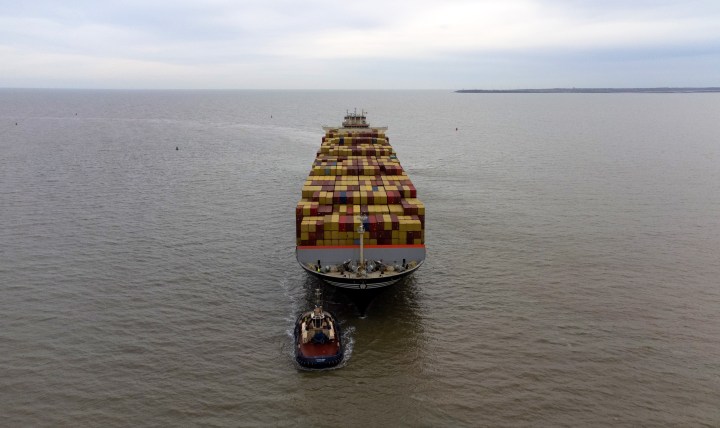Business Maverick
Red Sea diversions spew carbon emissions equal to 9 million cars

Ships seeking to avoid ongoing attacks by Houthi rebels in the Red Sea area are emitting millions of additional tons of carbon, making it tougher for companies using ocean freight to reduce pollution across their supply chains.
Instead of passing through Egypt’s Suez Canal, hundreds of vessels since mid-December are sailing around the Cape of Good Hope — a detour that adds at least a week to the journey between South Asia and northern Europe.
The additional fuel burned has led to approximately an extra 13.6 million tons of CO2 emissions over the past four months — equivalent to the pollution of about 9 million cars over that same period, according to a report from consultancy INVERTO, a subsidiary of Boston Consulting Group Inc.
“The extra emissions resulting from this crisis will increase companies’ carbon footprints – making it very hard to hit their net zero targets,” said Sushank Agarwal, a managing director at the company. “To meet these targets, companies will either need to reduce emissions elsewhere in their supply chains or invest in more carbon offset initiatives — both can be very costly.”
While significant, the extra emissions are a fraction of what the shipping industry — which carries 80% of world trade — spews into the atmosphere each year. The sector’s global regulator, the International Maritime Organization, is working on the world’s first global carbon levy, though it’s not set to come into force until 2027. Meanwhile, the planet continues to warm.
A separate report from Xeneta, an Oslo-based freight-analytics company, focuses specifically on container shipping and showed carbon emissions sailing from Asia to the Mediterranean rose by 63% last quarter compared with the final three months of 2023.
The Xeneta and Marine Benchmark Carbon Emissions Index, a gauge of carbon emissions per ton of cargo transported along the world’s top 13 trade lanes, reached its highest level in the first quarter in records going back to 2018.
Speeding up
“Ships are also being sailed at higher speeds in an attempt to make up time due to the longer distances, which again results in more carbon being burned,” said Emily Stausbøll, a market analyst at Xeneta.
According to data from Clarkson Research Services, the average speed of the world’s largest container ships jumped above 16 knots after the Red Sea attacks intensified and mass shipping diversions began in mid-December, compared with speeds under 15 knots earlier that month.
The 9 million cars calculation cited by INVERTO is based on a US Environmental Protection Agency estimate for a typical passenger vehicle. Using an International Energy Agency estimate for a year of emissions, the 13.6 million tons of CO2 are equivalent to that of 13.6 million passenger vehicles over four months, the report said.
















Comments - Please login in order to comment.